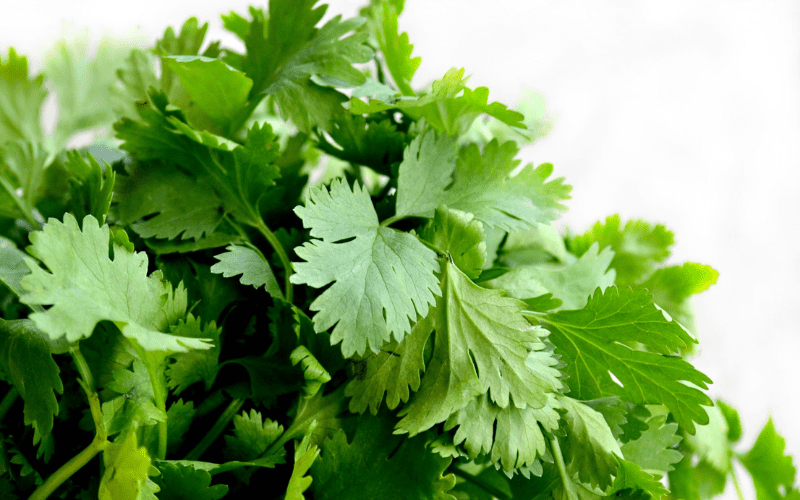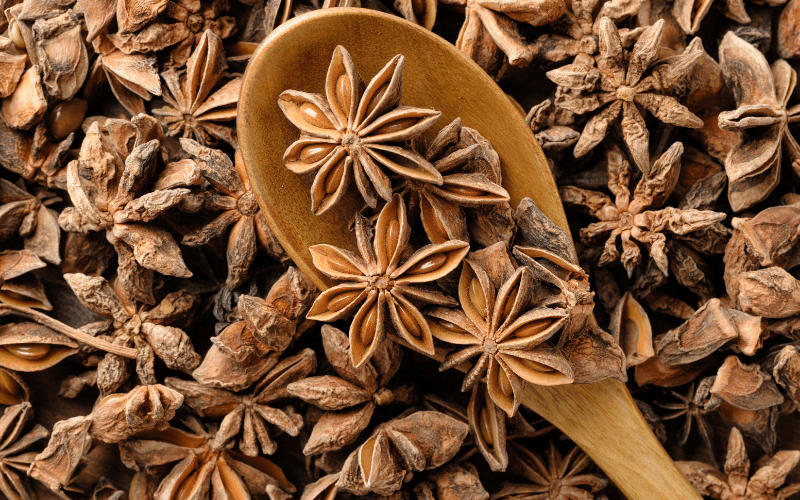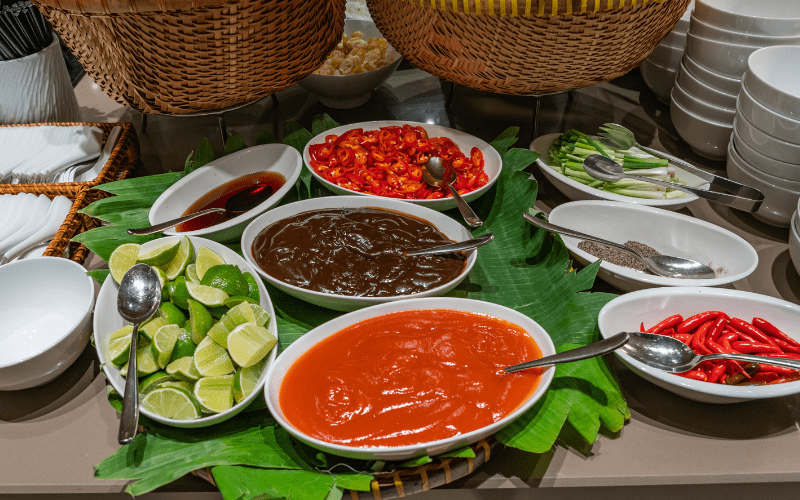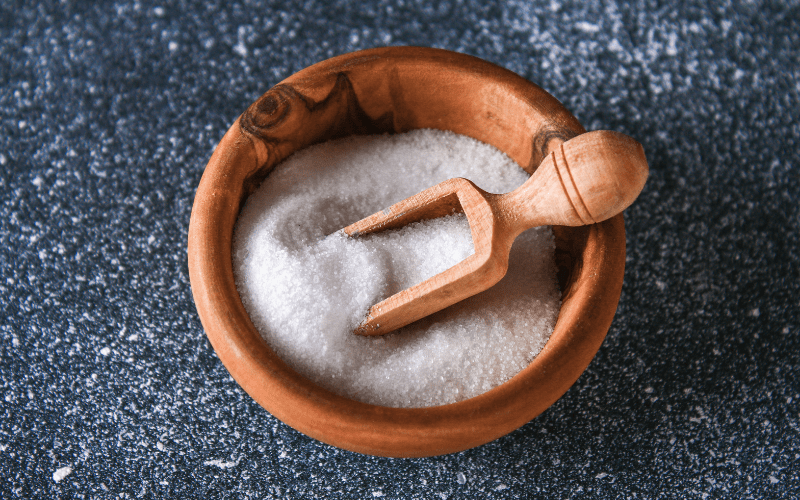In Vietnamese cuisine, herbs, spices, condiments, and seasonings play essential roles in creating the distinct flavors that make this cuisine so unique and flavorful.
While these terms are often used interchangeably, they refer to different elements that contribute to the overall taste and aroma of Vietnamese dishes.
Understanding the difference between herbs, spices, condiments, and seasonings is crucial for anyone looking to explore and appreciate the rich tapestry of Vietnamese flavors.
Vietnamese cuisine is renowned for its fresh and vibrant flavors, which are achieved through a careful balance of various ingredients.
Herbs, spices, condiments, and seasonings are key components that contribute to the complexity and depth of Vietnamese dishes.
Each of these elements brings its unique characteristics, enhancing the overall taste and aroma of the cuisine.
What are herbs?

Herbs are an integral part of Vietnamese cooking and are used abundantly to add freshness, fragrance, and texture to dishes.
Popular Vietnamese herbs include cilantro, Thai basil, mint, sawtooth herb, and perilla leaves. These herbs are often used as garnishes or added to soups, salads, and noodle dishes, imparting a burst of aromatic flavors that enliven the palate.
Here are three types of herbs:
- Annuals: Basil is an example of an annual herb. Annual herbs complete their life cycle within one year. They are typically planted and harvested within the same growing season. Basil is known for its aromatic leaves and is commonly used in Italian cuisine and various dishes worldwide.
- Biennials: Parsley is an example of a biennial herb. Biennial herbs have a life cycle of two years. In the first year, they produce foliage, and in the second year, they flower and set seeds. Parsley is widely used as a garnish and flavoring agent in a variety of dishes, including soups, salads, and sauces.
- Perennials: Thyme, sage, lavender, and rosemary are examples of perennial herbs. Perennial herbs have a life cycle of more than two years, and their foliage often persists throughout the year. These herbs are known for their strong aromas and flavors and are commonly used in cooking, seasoning, and herbal teas.
What are spices?

Spices are aromatic substances derived from various parts of plants, such as seeds, bark, roots, or fruits.
In Vietnamese cuisine, common spices include star anise, cinnamon, cloves, cardamom, and black peppercorns.
These spices are used to infuse dishes with warm, earthy, and sometimes pungent flavors. They are often featured in Vietnamese soups, stews, marinades, and braised dishes.
Here are four types of spices:
- Seeds: Fennel, mustard, nutmeg, and black pepper are examples of spices derived from seeds. These spices add distinct flavors, aromas, and textures to various dishes. They can be used whole, crushed, or ground to enhance the taste of meals.
- Fruits: Cayenne pepper is an example of a spice derived from a fruit. Fruits such as peppers can be dried and ground to create spicy and flavorful seasonings. Cayenne pepper, for instance, adds heat and a vibrant taste to dishes.
- Arils: Nutmeg is an example of a spice derived from arils. Arils are the fleshy coverings of certain seeds, and in the case of nutmeg, the aril surrounding the seed is dried and used as a spice. Nutmeg adds a warm and slightly sweet flavor to both sweet and savory dishes.
- Barks: Cinnamon and cassia are examples of spices derived from the bark of plants. The inner bark is dried and used as a spice, adding a sweet and aromatic flavor to a wide range of dishes. Cinnamon and cassia are commonly used in both sweet desserts and savory recipes.
What are condiments?
Condiments in Vietnamese cuisine refer to sauces, pastes, or flavor-enhancing ingredients that are used to complement and elevate the taste of a dish.
Fish sauce, shrimp paste, soy sauce, hoisin sauce, and chili sauce are among the popular condiments used in Vietnamese cooking, they are mostly pho sauces.

These condiments add depth, umami, and a balance of sweet, salty, and tangy flavors to various dishes, including stir-fries, dipping sauces, and noodle bowls.
Here are three types of condiments:
- Pungent condiments: Chives, garlic, horseradish, and onions are examples of pungent condiments. These condiments add a strong and sharp flavor to dishes, enhancing their taste and aroma.
- Hot condiments: Capers, gherkins, ketchup, chili sauce, Al steak sauce, Tabasco sauce, and Worcestershire sauce are examples of hot condiments. These condiments add heat and spiciness to dishes, giving them a fiery kick.
- Fatty substances: Butter, margarine, olive oil, and vegetable oil fall under the category of fatty substances. While not all condiments are inherently fatty, these examples are commonly used to add richness and smoothness to various dishes.
What are seasonings?

Seasonings are ingredients that are used to enhance the overall taste of a dish. In Vietnamese cuisine, common seasonings include salt, sugar, vinegar, and lime juice.
These seasonings are used to balance flavors, adjust the level of sweetness or acidity, and bring harmony to the dish.
They are added during the cooking process or as a finishing touch to achieve the desired taste profile.
Four types of seasoning:
- Saline seasonings: These include ingredients that add a salty or savory flavor to dishes. Examples of saline seasonings are salt, spiced salt (salt with added spices), and saltpeter (used for curing meat).
- Acid seasonings: These seasonings add a tangy or acidic taste to food. Examples include plain vinegar, tarragon (a herb with a slightly sour flavor), verjuice (made from unripe grapes), lemon juice, and orange juice.
- Hot seasonings: These seasonings add heat or spiciness to dishes. They can range from mildly spicy to very hot. Examples of hot seasonings include ground pepper, peppercorns (whole black or white pepper), mignonette pepper (a type of small peppercorn), paprika (a spice made from dried and ground red peppers), curry (a blend of spices including chili, turmeric, and coriander), cayenne (a hot chili pepper), and mixed pepper spices (blends of various peppers).
- Spice seasonings: These seasonings are made from various spices, which are aromatic substances derived from plants. Examples include essential oils such as cloves, cinnamon, and paprika (which can fall under both hot and spice seasonings categories).
Read more: What is Accent seasoning?
FAQs
Can I substitute herbs with spices in Vietnamese cooking?
While herbs and spices offer distinct flavors, they can enhance different aspects of a dish. It’s best to use the recommended herbs for authentic Vietnamese taste, but you can experiment with spices to create unique flavor profiles.
Are Vietnamese condiments readily available in regular grocery stores?
Many Vietnamese condiments can be found in specialty Asian grocery stores or online. However, some popular condiments like fish sauce and soy sauce are often available in regular grocery stores as well.
How should I store Vietnamese herbs, spices, condiments, and seasonings?
Vietnamese herbs are best stored in a container with a damp paper towel in the refrigerator. Spices should be stored in airtight containers away from heat and light. Condiments and seasonings should be kept in cool, dry places, away from direct sunlight.
Can I use seasoning blends as a substitute for individual seasonings in Vietnamese cuisine?
It’s recommended to use individual seasonings for more precise flavor control. However, seasoning blends can be used as a convenient alternative if the specific flavors are similar to the required seasonings.
What are some popular Vietnamese dishes that showcase the use of herbs, spices, condiments, and seasonings?
Some iconic Vietnamese dishes include pho (noodle soup), bun cha (grilled pork with noodles), banh mi (Vietnamese sandwich), and fresh spring rolls. These dishes highlight the harmonious blend of herbs, spices, condiments, and seasonings in Vietnamese cuisine.
Is salt a condiment?
Salt is not typically classified as a condiment. It is considered a seasoning. Salt is a mineral and is widely used to enhance the flavor of food.
Is herb a spice?
No, herbs and spices are distinct categories. Herbs and spices have different botanical origins and are used in different ways.
Conclusion
- Herbs refer to the leaves, flowers, or stems of plants and are primarily used for flavoring or garnishing food. They can be used fresh or dried and are known for adding aroma and depth to dishes.
- Spices, on the other hand, are derived from various parts of plants such as seeds, fruits, roots, and barks. They are used for flavoring, coloring, or preserving food. Spices often have stronger and more intense flavors compared to herbs, and they bring distinct tastes to dishes.
- Condiments are supplements added to food after it has been cooked. They can be pungent, hot, or fatty substances that enhance the flavor of a dish. Condiments can also serve as seasonings depending on how they are used. For example, mayonnaise can be a condiment when added to a sandwich but can also function as a seasoning when used in potato salad.
- Seasonings, in general, are ingredients used in the preparation of food before it is cooked. They can include a wide range of spices, herbs, salts, and other flavor enhancers that are used to add taste and complexity to dishes.
Understanding the differences between herbs, spices, condiments, and seasonings is important for enhancing our culinary knowledge and creating flavorful dishes.